Plano de Urbanização Porto-Campanhã
The Porto Campanhã Urbanization Plan leverages Portugal’s new high-speed line to catalyze the transformation of a topographically complex district on Porto’s northeast slopes. Sitting between the lower and upper city, Campanhã will upgrade its existing station into a fully intermodal gateway and add a new west-side plaza dedicated to high-speed services and related facilities.
Addressing fragmentation and uneven urban quality, the plan proposes a hybrid ring structure that bridges metropolitan and local scales. It completes missing links, organizes development plots for mixed uses, and clarifies first/last-mile access through well-signed walking and cycling routes. The new plaza, improved station forecourts, and barrier-free crossings reconnect neighborhoods across the rail corridor while making transfers between metro, rail, bus, and micromobility seamless.
Sustainability is embedded in the public realm. The strategy prioritizes non-motorized mobility, increases tree canopy and permeable surfaces where feasible, and strengthens ecological continuity to link existing green areas. Streets are designed as safe, comfortable places with active frontages, daylighted routes, and generous, shaded waiting areas that support daily life.
Socially and economically, the plan repositions Campanhã as a metropolitan hub, attracting residents and businesses while respecting its industrial legacy. By coordinating prior studies and commitments under a single, legible framework, the Porto Campanhã Urbanization Plan provides the tools, spaces, and governance structure needed to welcome high-speed rail and to reconnect the historic city with its future: the city of Campanhã.

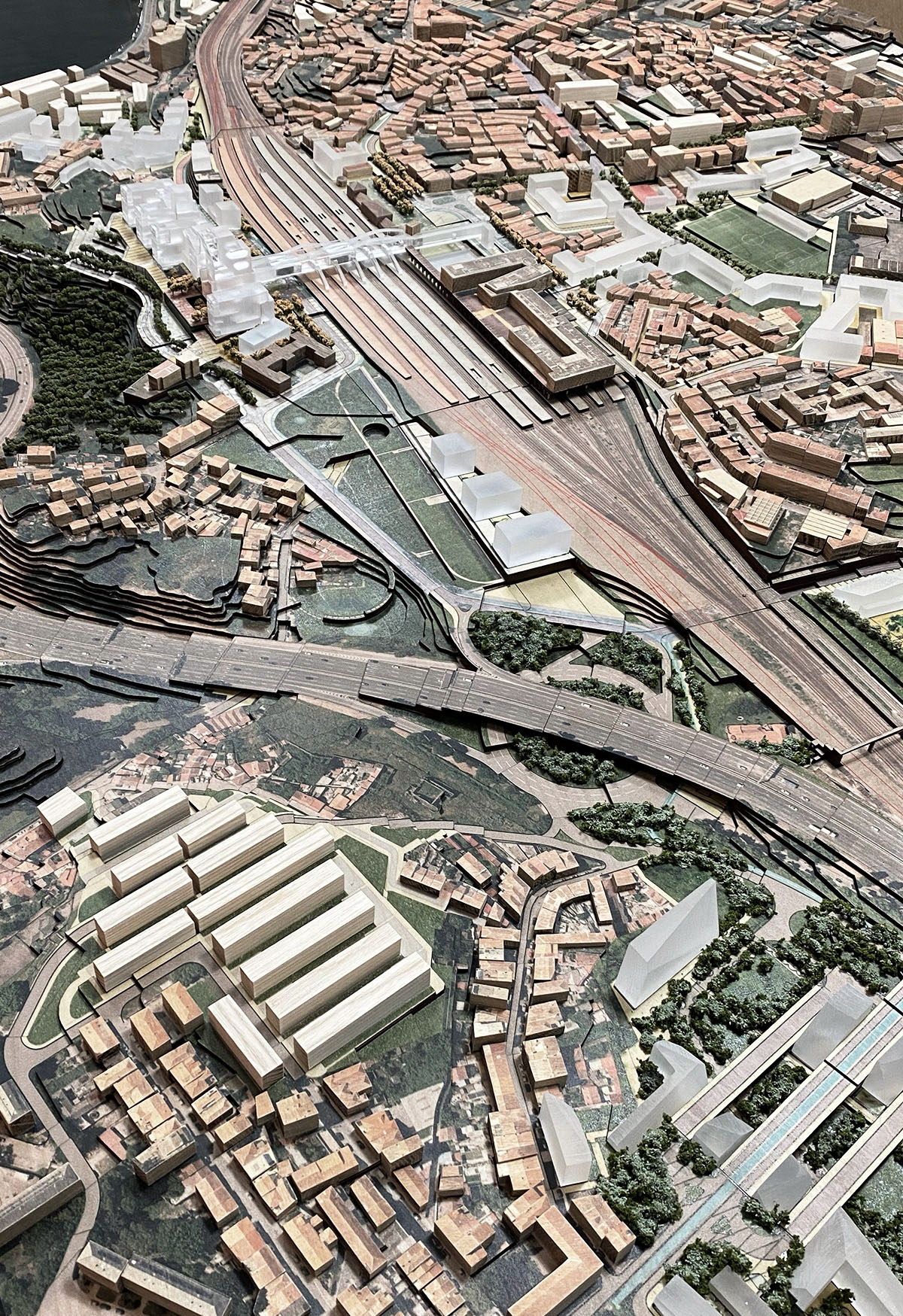
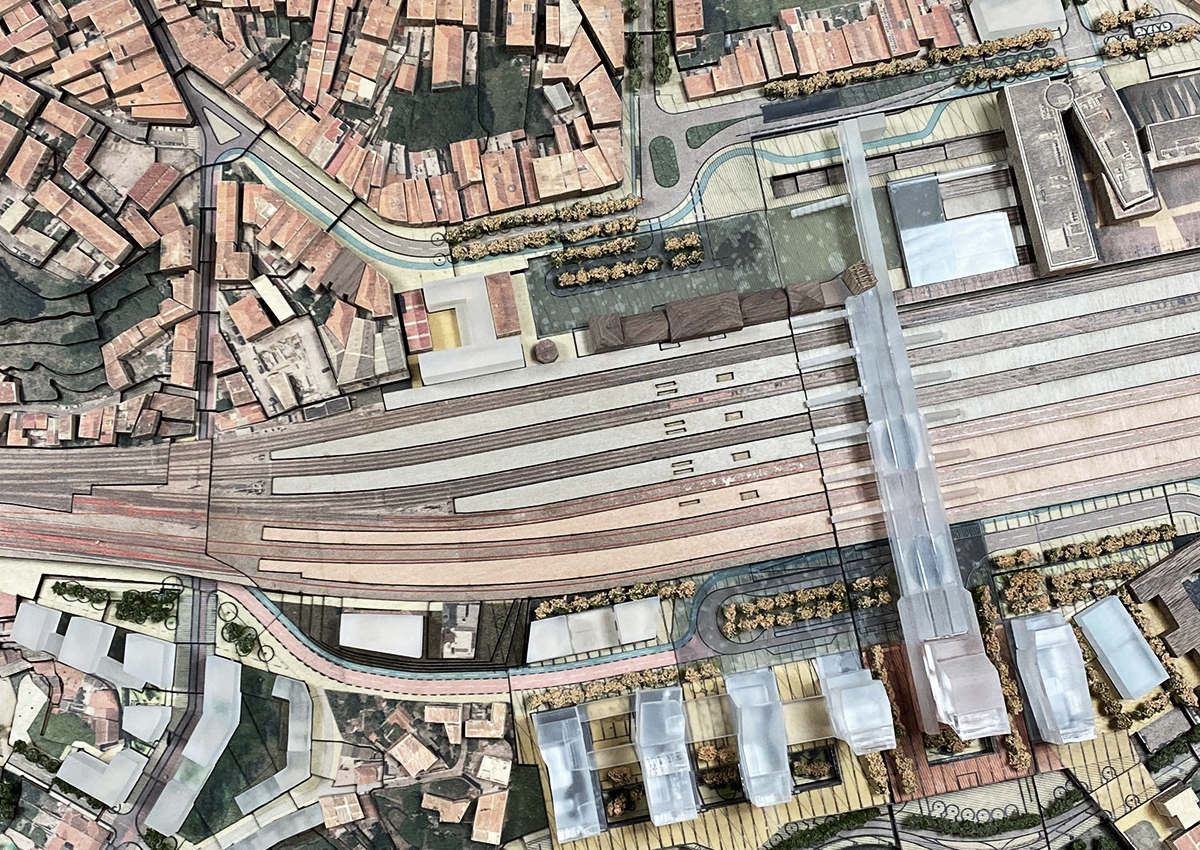
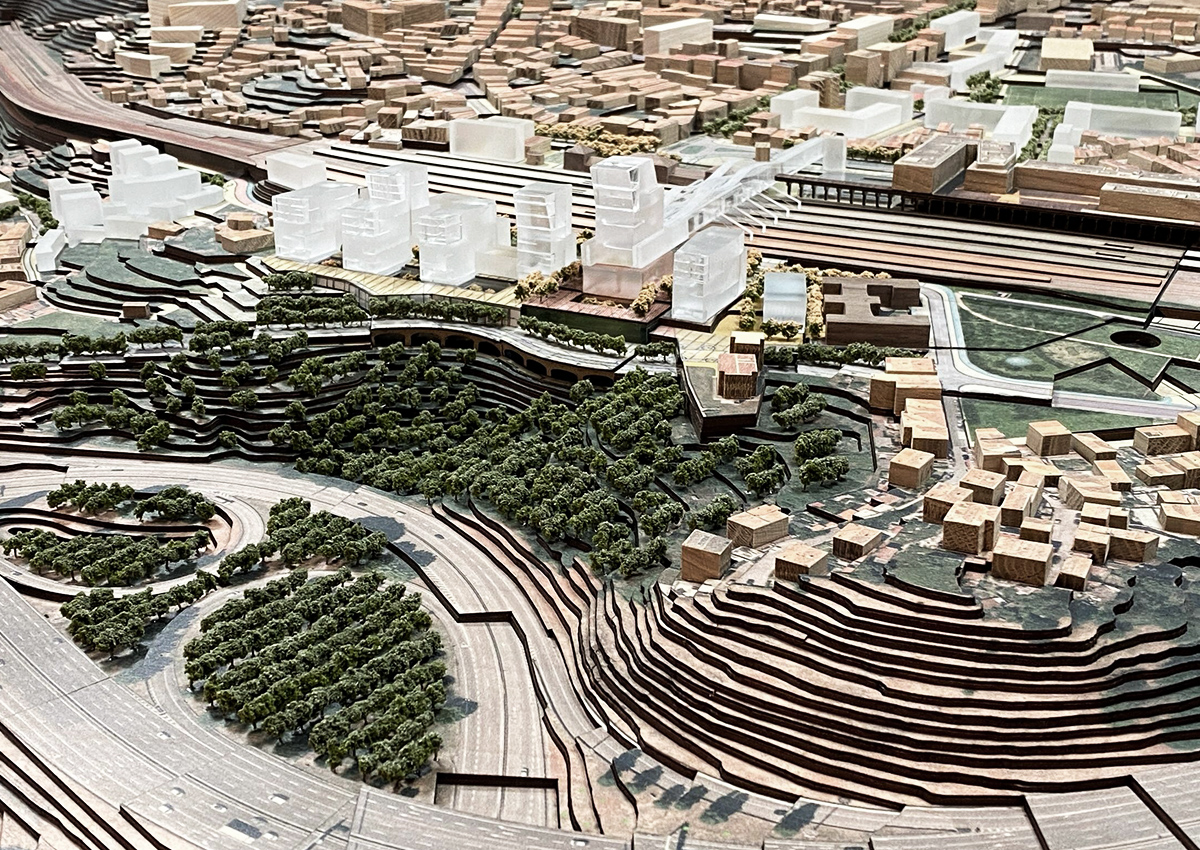
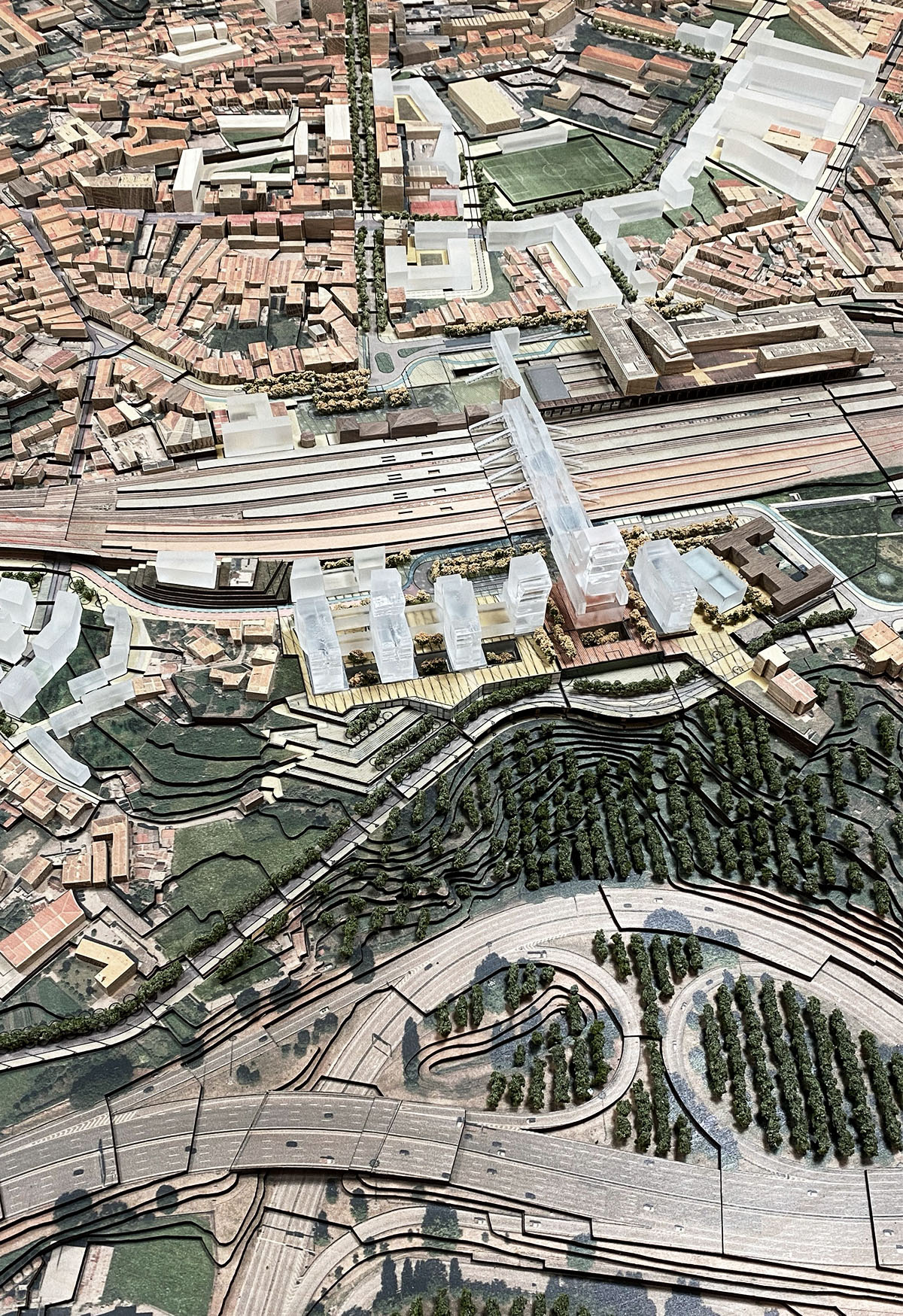
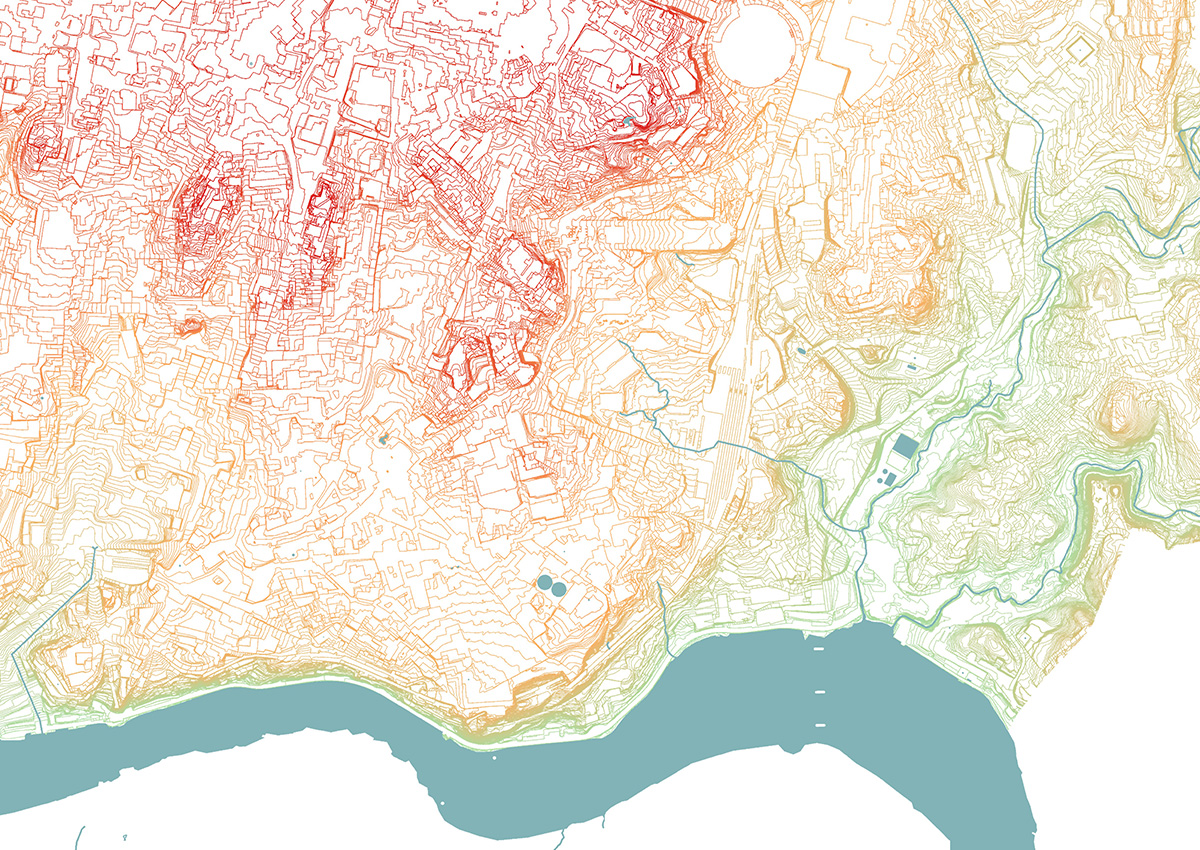
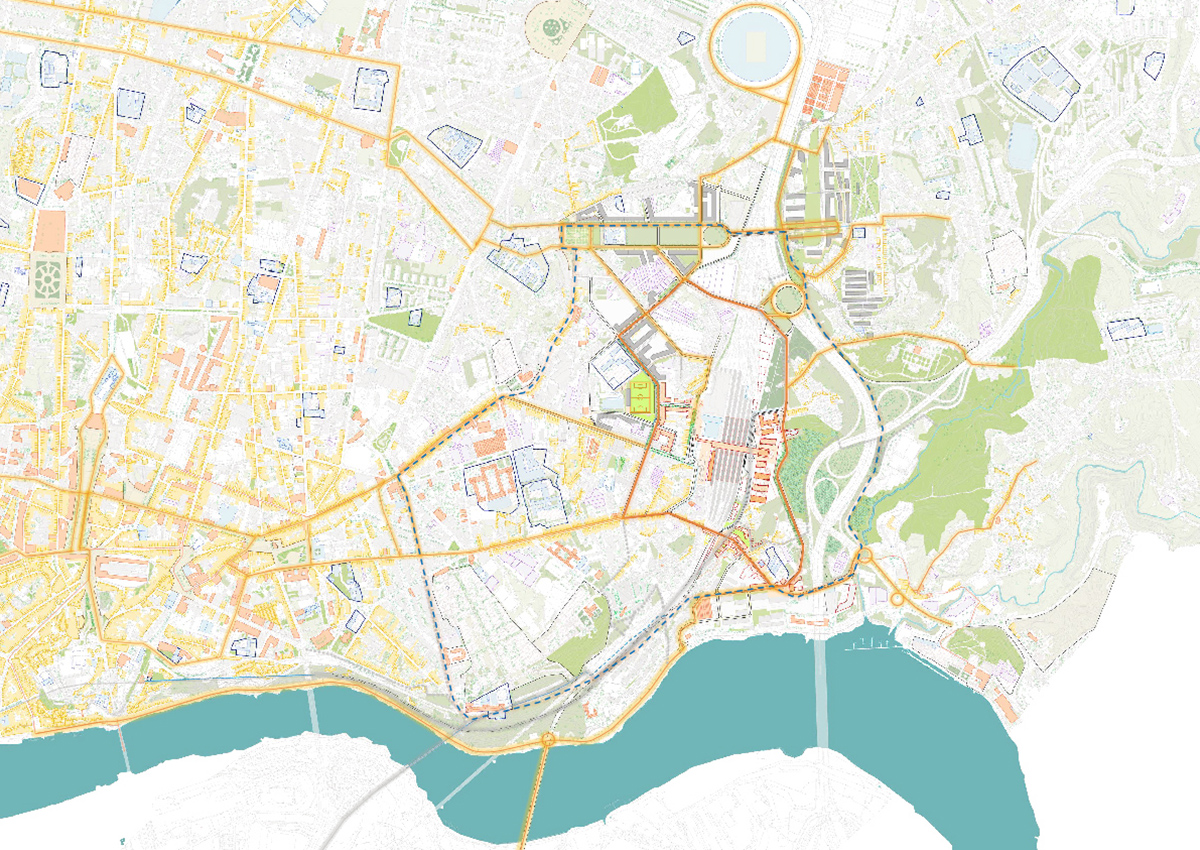
The Porto Campanhã Urbanization Plan leverages Portugal’s new high-speed line to catalyze the transformation of a topographically complex district on Porto’s northeast slopes. Sitting between the lower and upper city, Campanhã will upgrade its existing station into a fully intermodal gateway and add a new west-side plaza dedicated to high-speed services and related facilities.
Addressing fragmentation and uneven urban quality, the plan proposes a hybrid ring structure that bridges metropolitan and local scales. It completes missing links, organizes development plots for mixed uses, and clarifies first/last-mile access through well-signed walking and cycling routes. The new plaza, improved station forecourts, and barrier-free crossings reconnect neighborhoods across the rail corridor while making transfers between metro, rail, bus, and micromobility seamless.
Sustainability is embedded in the public realm. The strategy prioritizes non-motorized mobility, increases tree canopy and permeable surfaces where feasible, and strengthens ecological continuity to link existing green areas. Streets are designed as safe, comfortable places with active frontages, daylighted routes, and generous, shaded waiting areas that support daily life.
Socially and economically, the plan repositions Campanhã as a metropolitan hub, attracting residents and businesses while respecting its industrial legacy. By coordinating prior studies and commitments under a single, legible framework, the Porto Campanhã Urbanization Plan provides the tools, spaces, and governance structure needed to welcome high-speed rail and to reconnect the historic city with its future: the city of Campanhã.